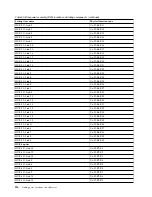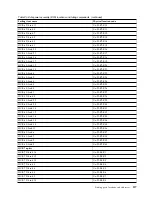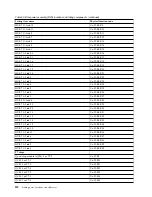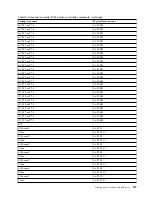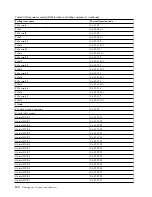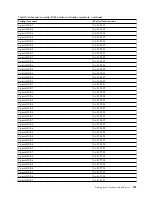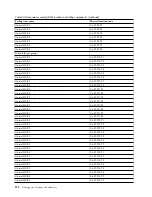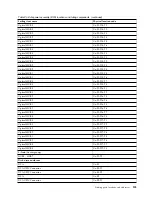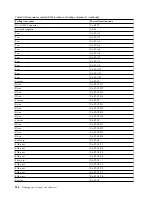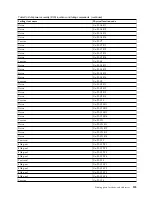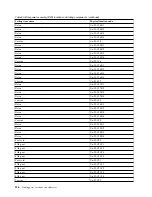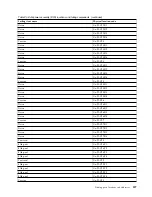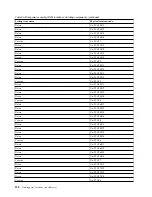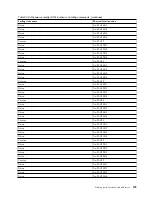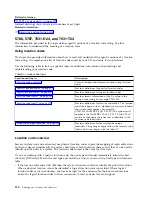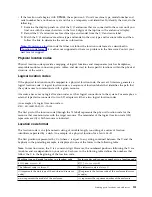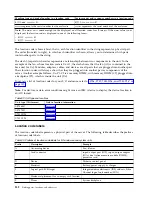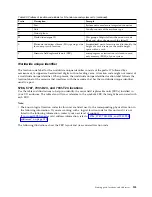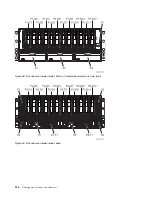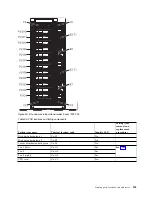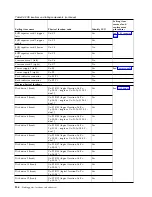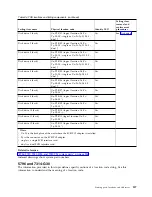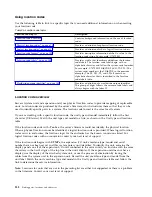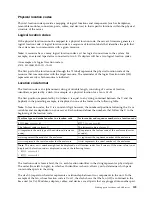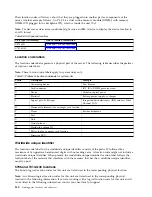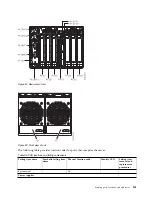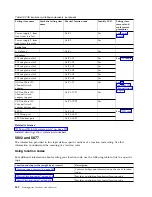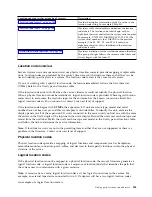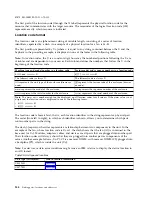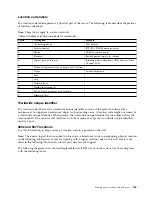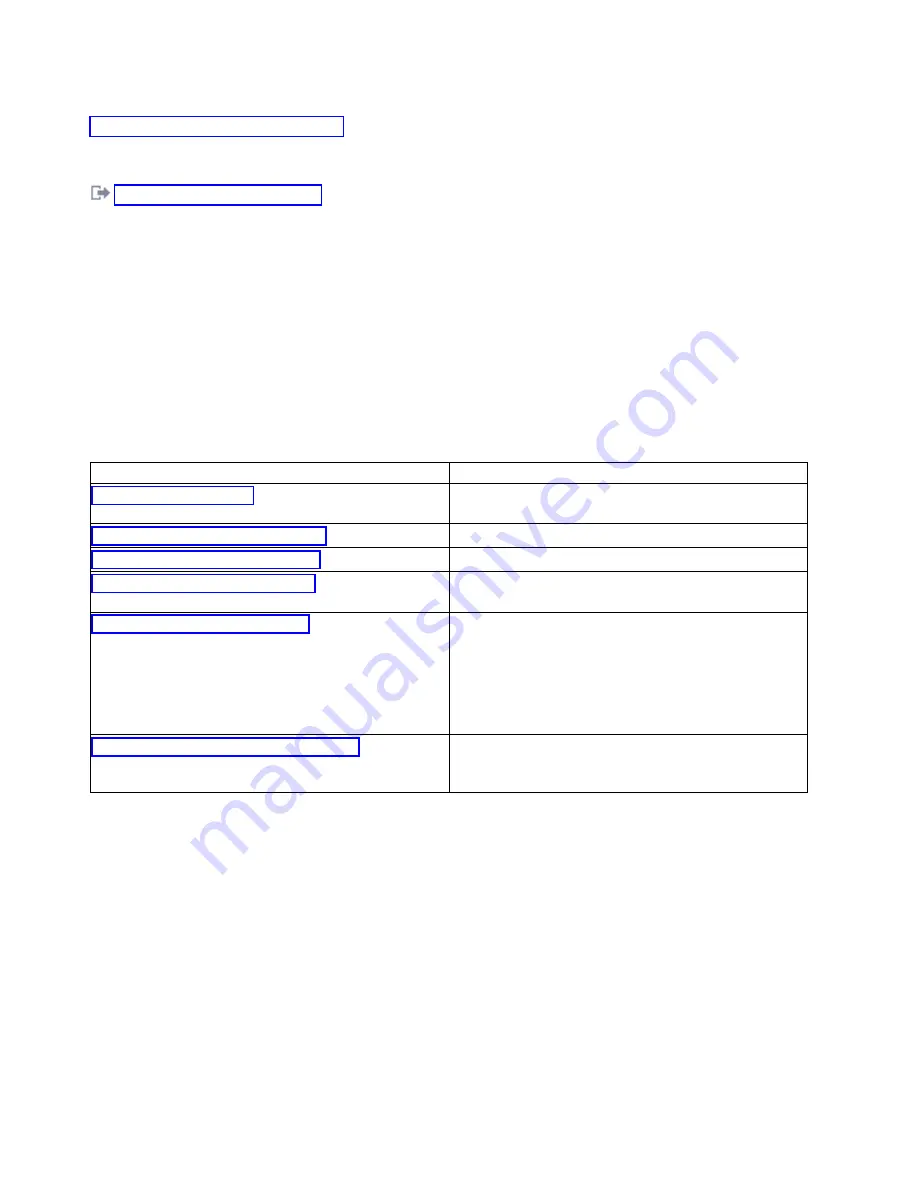
Related reference
:
“9125-F2C system parts” on page 275
Indexed drawings show system part numbers of each part.
Related information
:
5786, 5787, 7031-D24, and 7031-T24
The information provided in this topic defines specific sections of a location code string. Use this
information to understand the meaning of a location code.
Using location codes
This topic also provides information about how to read and understand the specific sections of a location
code string. A comprehensive list of location codes used by your I/O enclosure is also provided.
Use the following table to link to a specific topic for additional information when reading and
understanding your location code.
Table 31. Location code topics
Location code topics
Description
Contains background information about using location
codes.
“Physical location codes” on page 131
Provides definitions for physical location codes.
“Logical location codes” on page 131
Provides definitions for logical location codes.
“Location code format” on page 131
Provides format information of the Un value in the
location code string. For example U7031.001.
“Location code labels” on page 132
Provides definitions for location code labels. The location
code labels begin with an alphabetic character and follow
the system serial number. For example,
U7031.001.10ABCDE-P3-C31-T2-L23. (The system serial
number is the 10ABCDE.) The P3, C31, T2, and L23 all
contain an alphabetic character that is identified in the
Location code labels table.
“Worldwide unique identifier” on page 133
Provides definitions for the worldwide unique
identifiers. This group of digits follows the resource code
labels and always begins with the letter W.
Location code overview
Servers (system unit and enclosures) use physical location codes to provide mapping of replaceable units.
Location codes are produced by the server's firmware, which structures them so that they can be used to
identify specific parts in a system. The location code format is the same for all servers.
If you are working with a specific location code, the unit type and model immediately follow the first
character (Utttt.mmm). Match the unit type and model to a link, as shown in the Unit type and locations
table.
v
If the location code ends with -Txx-Lxx, the server's firmware could not identify the physical location.
When a physical location cannot be identified, a logical location code is provided. Where logical
location codes occur in enclosures, the locations topic for the enclosure has the known conversions
listed. For logical location codes with no conversion, contact your next level of support.
130
Finding parts, locations, and addresses
Summary of Contents for Power Systems Series
Page 1: ...Power Systems Finding parts locations and addresses IBM...
Page 2: ......
Page 3: ...Power Systems Finding parts locations and addresses IBM...
Page 19: ...Figure 1 Rack front view Figure 2 Rack top view Finding parts locations and addresses 7...
Page 60: ...Figure 30 Rack front view Figure 31 Rack top view 48 Finding parts locations and addresses...
Page 70: ...Rear Top 58 Finding parts locations and addresses...
Page 80: ...Rear Top 68 Finding parts locations and addresses...
Page 81: ...Midplane I O card Finding parts locations and addresses 69...
Page 100: ...Figure 39 Node locations 88 Finding parts locations and addresses...
Page 111: ...Figure 44 Memory card locations Finding parts locations and addresses 99...
Page 244: ...Final assembly 232 Finding parts locations and addresses...
Page 253: ...Finding parts locations and addresses 241...
Page 288: ...Cover assembly 276 Finding parts locations and addresses...
Page 324: ...312 Finding parts locations and addresses...
Page 335: ...Notices 323...
Page 336: ...IBM Printed in USA...

